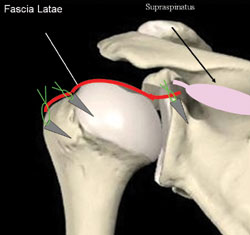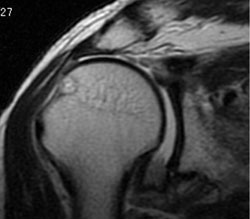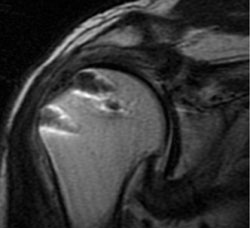Improved function seen with new superior capsule reconstruction technique
SAN FRANCISCO — Arthroscopic superior capsule reconstruction can restore shoulder stability and function in patients with irreparable rotator cuff tears, according to a presentation at the 2011 Annual Meeting of the Arthroscopy Association of North America.
“For the irreparable rotator cuff tear, we have developed a new surgical treatment of superior capsule reconstruction in which the grafts are attached medially to the superior glenoid and laterally to the greater tuberosity,” Teruhisa Mihata, MD, PhD, said.
The new procedure
Mihata and his group examined 22 consecutive patients with irreparable supraspinatus and infraspinatus tears from 2007 to 2009, and prospectively enrolled them in the study. Patients experienced a 20-month duration of symptoms prior to surgery and had an average follow-up of 33 months.
Surgeons performed arthroscopic superior capsular reconstruction using fascia lata on each patient and used suture anchors to attach the graft medially to the superior tubercle of the glenoid, and laterally to the greater tuberosity. In nine patients, surgeons arthroscopically repaired a torn subscapularis tendon. Side-to-side sutures were also added between the graft and the infraspinatus tendon, as well as between the graft and the subscapularis tendon to help improve shoulder joint coupling, Mihata said.
Radiographs and MRIs were taken, and physical examinations were performed preoperatively and postoperatively at 3 months, 6 months, 12 months and 24 months.
|
|
|
|
|
During the superior capsule reconstruction, the graft is attached medially to the superior tubercle of the glenoid and laterally to the greater tuberosity (left). Coronal MRI scans are shown preoperatively (center) and 1 year after arthroscopic superior capsule reconstruction (right). Images: Mihata T |
||
Satisfactory results
Mihata and colleagues found a significant increase in patients’ mean active flexion, as well as improvements in abduction and external rotation.
“Muscle strength of the abduction, external rotation and internal rotation all improved after surgery,” he added. “There were no surgical complications … in this series.”
Patients with positive preoperative subacromial impingement tests had negative findings upon postoperative examination. Furthermore, acromiohumeral distances were found to increase between preoperative and postoperative values.
Mihata’s team also found that none of the patients demonstrated any progression of osteoarthritis or tears of grafted fascia lata by the final follow-up. He noted preoperative fatty degeneration in the supraspinatus muscle did not change following the operation. Patients also experienced an improvement in night pain, with symptoms being relieved in 21 patients within 1 week of the surgery. Eight patients who were manual workers ultimately returned to their jobs.
“In patients with irreparable rotator cuff tears, superior capsule reconstruction restores the superior stability of the humeral head, resulting in substantial improvements in shoulder function, strength and pain relief with few complications,” Mihata concluded. “[It] is an effective option as an alternative treatment for rotator cuff tears.” — by Robert Press
Reference:
- Mihata T, Watanabe C, Fukunishi K, Ohue M. Arthroscopic superior capsule reconstruction restores shoulder stability and function in patients with irreparable rotator cuff tears: A prospective study. Paper #SS-15. Presented at the 2011 Annual Meeting of the Arthroscopy Association of North America. April 14-16. San Francisco.

- Teruhisa Mihata, MD, PhD, can be reached at the Department of Orthopedic Surgery, Osaka Medical College, 2-7, Daigaku-machi, Takatsuki, Osaka, 569-8686, Japan; email: tmihata@yahoo.co.jp or tmihata@poh.osaka-med.ac.jp.
- Disclosure: Mihata has no relevant financial disclosures.



